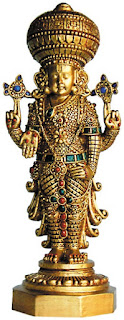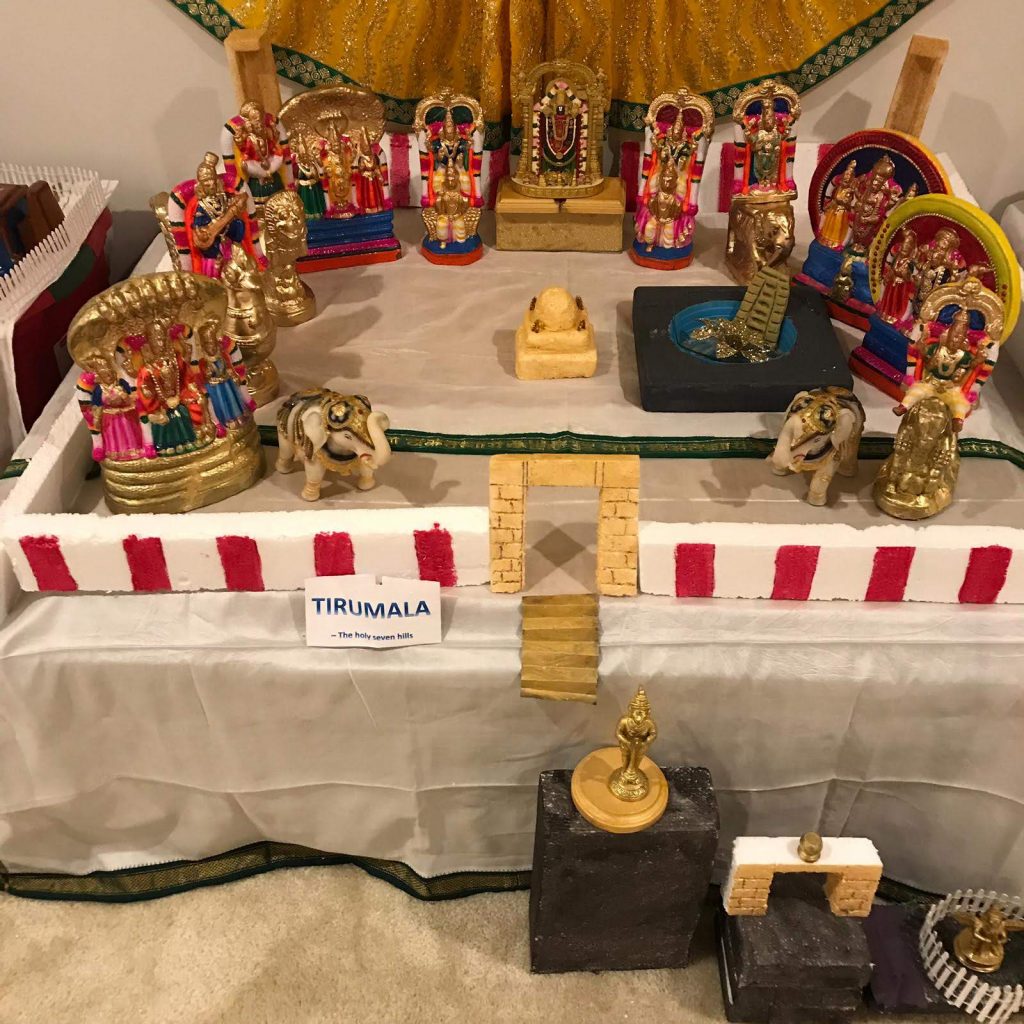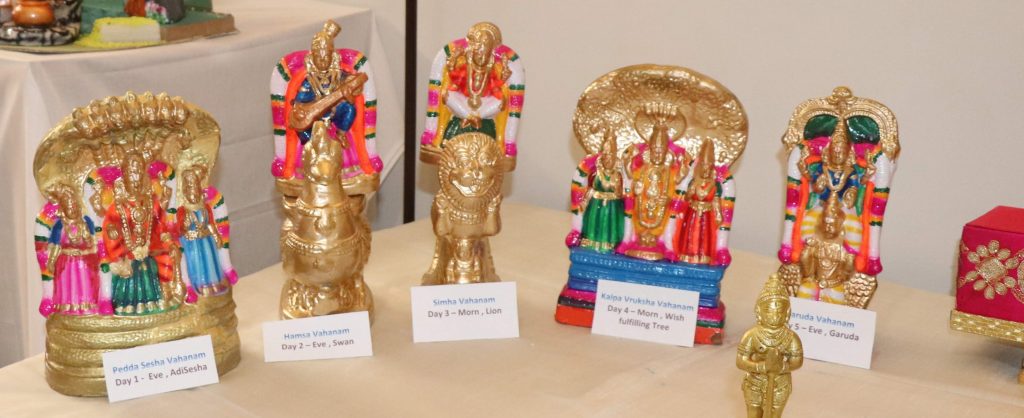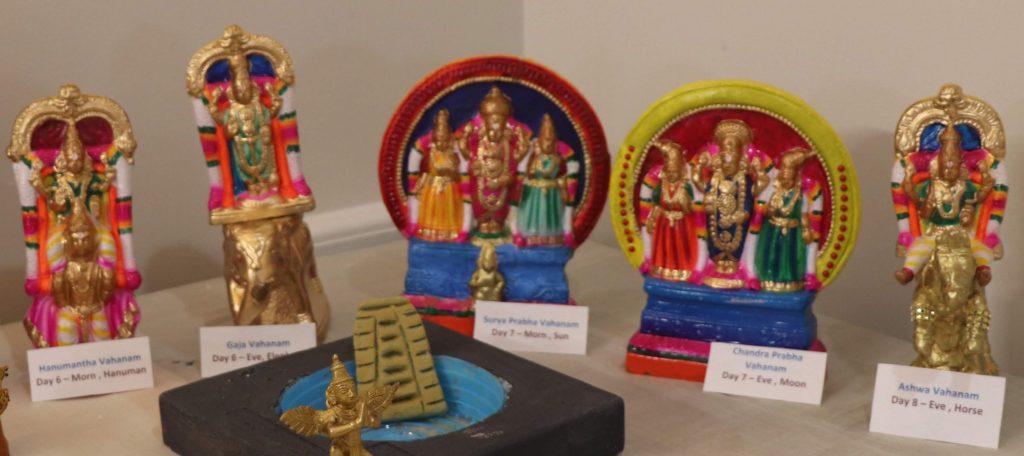Festivals celebrated and their significance
Divine Festivals
India is an unique land of diversity with people speaking different languages , following different culture and also of various faiths living together. There is atleast one festival for every season with many intervening ones celebrated for many reasons.
Festivals are the times when people celebrate the gods and goddesses, associated spiritual events and express devotion. Every celebration centers around the rituals of prayer and seeking of blessings, and involves the decoration of homes, wearing of new clothes, music, dancing, and feasting.
Festivals are an expression of the spirit of celebration. They are observed with enthusiasm and gaiety and are occasions when the greater family and friends come together. They also present everyone with an opportunity to socialize. Many of these festivals are associated with special foods.
We have selected a festivals celebrated across the country and displayed them in the Kolu.
Tirumala Srivari Brahmostavam
Sri Venkateswara Swami vari Brahmotsavam is the most important annual fête celebrated at Sri Venkateswara Temple in Tirumala Tirupati of Chittoor District in Andhra Pradesh, India. The event is conducted for nine days during Hindu Calendar month of Āśvina which falls in between the English months September and October . The days generally fall in the same days of Navratri
During the festival, the Utsava-murti (processional deity) of the presiding deity Lord Venkateswara, along with his consorts Sridevi and Bhudevi, will be taken on a procession on different Vahanams on the streets surrounding the temple.The celebration attracts pilgrims from across the world.
A Brahmotsavam is a holy cleansing ceremony in honor of Lord Brahma, and the one at Tirumala is by far the largest As per the legend it is believed that Lord Brahma will descend to the earth to conduct this festival and hence the festival got the name Brahmotsavams, meaning an utsavam(festival) performed by Brahma.
Sri Venkteswara Sahasranamastotra has references to Brahma performing the festival. To resemble this even now a small empty wooden chariot known as Brahmaratham will move ahead of the processions of the Venkateswara’s processional deity Malayappa
The first evidential reference about conducting festivals in Venkateswara Temple, Tirumala can be traced back to 966 CE, when Pallava queen Samavai had made endowments and ordered to use the revenues generated from that land to be used for the celebration of major festivals in the temple. As per inscriptions, until 1582 CE, Brahmotsavams were conducted as many as 12 times a year
On the evening before the start of the first day, the rite of “Ankurarpana” (sowing of the seeds to signify fertility, prosperity and abundance) is performed along with a festival for Vishvaksena (the leader of Narayana’s retinue who removes obstacles and protects worship). On the first day, the main activity is the “Dwajarohana,” the hoisting of the Garuda flag at the Dhvajastambham.
This signifies the commencement of the Brahmotsava. It is believed that Garuda goes to Devalokam and invites the Devas to attend the function. During the days of the festival, the religious activities include daily homas and processions of utsava-murti on different Vahanas on mada streets(roads surrounding the Temple).
Every evening, the utsava-murtis are decorated with different alankarams. The concluding day is the Janma Nakshatra (birth star) of Sri Venkateswara, which is celebrated in a grand way with Avabhritha Utsava (special abhishekams for the utsava murti).
On Day 9 , The Sudarshana Chakra is bathed in the Swami Pushkarini and all the devotees bathe along with the Chakra. In Aurora, a priest takes the Sudarshana Chakra on his head and takes a holy bath in Swami Pushkarini. Afterwards, the Chakra is placed on a high platform, so the devotees can walk under it and be blessed with the water dripping down from the Sudarsana.
The celebration officially concludes with “Dhvajavarohanam,” the lowering of the Garuda flag. The priests pay respects to Gods and Sages with the chanting of Vedic mantras and see them off on their return to the Devaloka.
Time | Vahanam |
Day 1 – Morning | Dwajarohanam – Flag Hoisting Dwajarohanam is a flag-hoisting festival that is held on the first day by hoisting a flag (dhwajapatam) with a picture of Garuda (Mount of Vishnu) on the top of the Dwajasthambam of the Temple.The flag will be hoisted amid Vedic chanting. It is believed to be a symbolic significance of formal invitation to all the deities to attend the Brahmotsavam festival.Before Flag-hoisting the processional deities of the Temple, Malayappa by his consorts Sridevi, Bhudevi, will be taken in a procession along with Dwajapatam and Parivara devathas such as Anantha, Chakra, Garuda and Vishvaksena. |
Day 1 – Evening | Pedda Sesha Vahanam – Adisesha After the Dwajaarohanam the Lord is taken out in a procession in |
Day 2 – Morning | Chinna Sesha Vahanam -Vasuki On the second day morning the Lord is taken out in a procession |
Day 2 – Evening | Hamsa Vahanam – Swan On the second day evening the Lord is again taken out in a |
Day 3 – Morning | Simha Vahanam – Lion On the third day morning the Lord is taken out in a procession |
Day 3 – Evening | Muthyala Pallaki Vahanam – Palanquin filled with pearls On the evening of the third day, the Lord is again taken out in |
Day 4 – Morning | Kalpa Vruksha Vahanam – Giver of Boons On the fourth day of the festival the Lord is taken out in |
Day 4 – Evening | Sarva Bhoopala Vahanam – Lord of the lords On the fourth day evening the Lord is again taken out in |
Day 5 – Morning | Mohini Avatharam On the fifth day morning the Lord is taken out in |
Day 5 – Evening | Garuda Vahanam On the fifth day evening the Lord Sri Venkateswara is |
Day 6 – Morning | Hanumantha Vahanam On the sixth day morning the Lord is taken out in |
Day 6 – Evening | Gaja Vahanam On the sixth day evening the Lord is taken out first for |
Day 7 – Morning | Surya Prabha Vahanam On the seventh day morning the Lord Venkateswara is |
Day 7 – Evening | Chandra Prabha Vahanam On the seventh day evening the Lord is again taken out |
Day 8 – Morning | Rathostavam On the penultimate day (eighth day) morning the Lord |
Day 8 – Evening | Ashwa Vahanam On the eighth day evening the Lord is again taken out in |
Day 9 – Morning | Chakra Snanam On the ninth day morning, last day of the Brahmostavams, special abhishekam known as Avabhrutha Snanam is held for processional deity Malayappa and his concerts Sridevi and Bhudevi along with Sudarshana Chakra (Disc weapon of Vishnu) at Varaha Swamy temple on the banks of Swamy Pushkarini. Later, the Sudarshana Chakra is immersed in the waters of Swamy Pushkarini. Large number of devotees will take a dip in the water of Pushkarini simultaneously. It is believed that one will get absolved from sins by taking a dip in Swamy Pushkarini simultaneously along with the Sudarshana Chakra on this day |
Day 9 – Evening | Dwajaavarohanam On the ninth day evening the Garuda flag will be lowered as a mark of completion of the Brahmostavam.The jeeyangas will be there along with priests. They will chant various mantras. It is performed in the dwajastamba mandapa. The priests will then lower the garuda dwaja and the festival will soon be completed. |

Malayappa Swamy – Lord Venkateswara’s processional form




